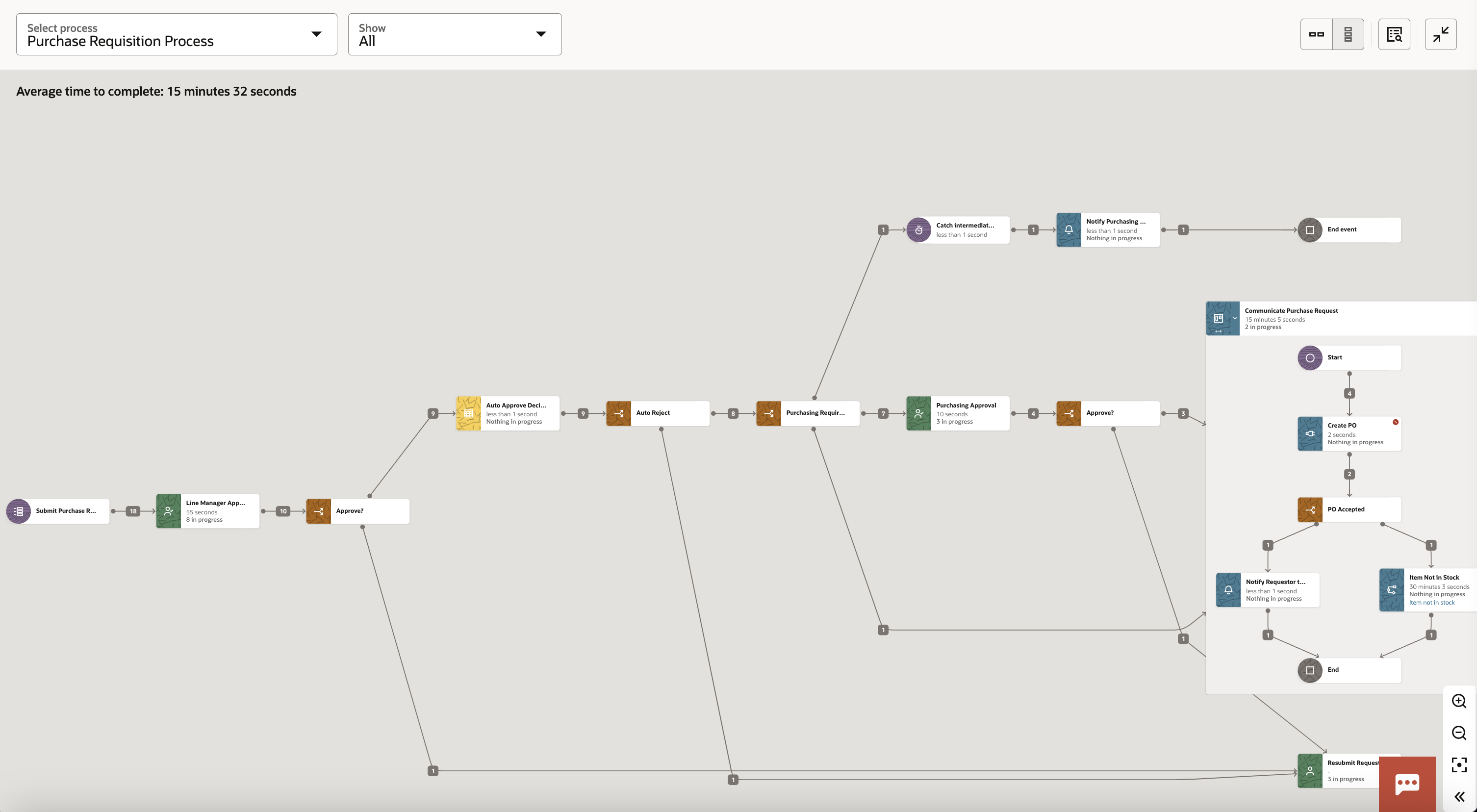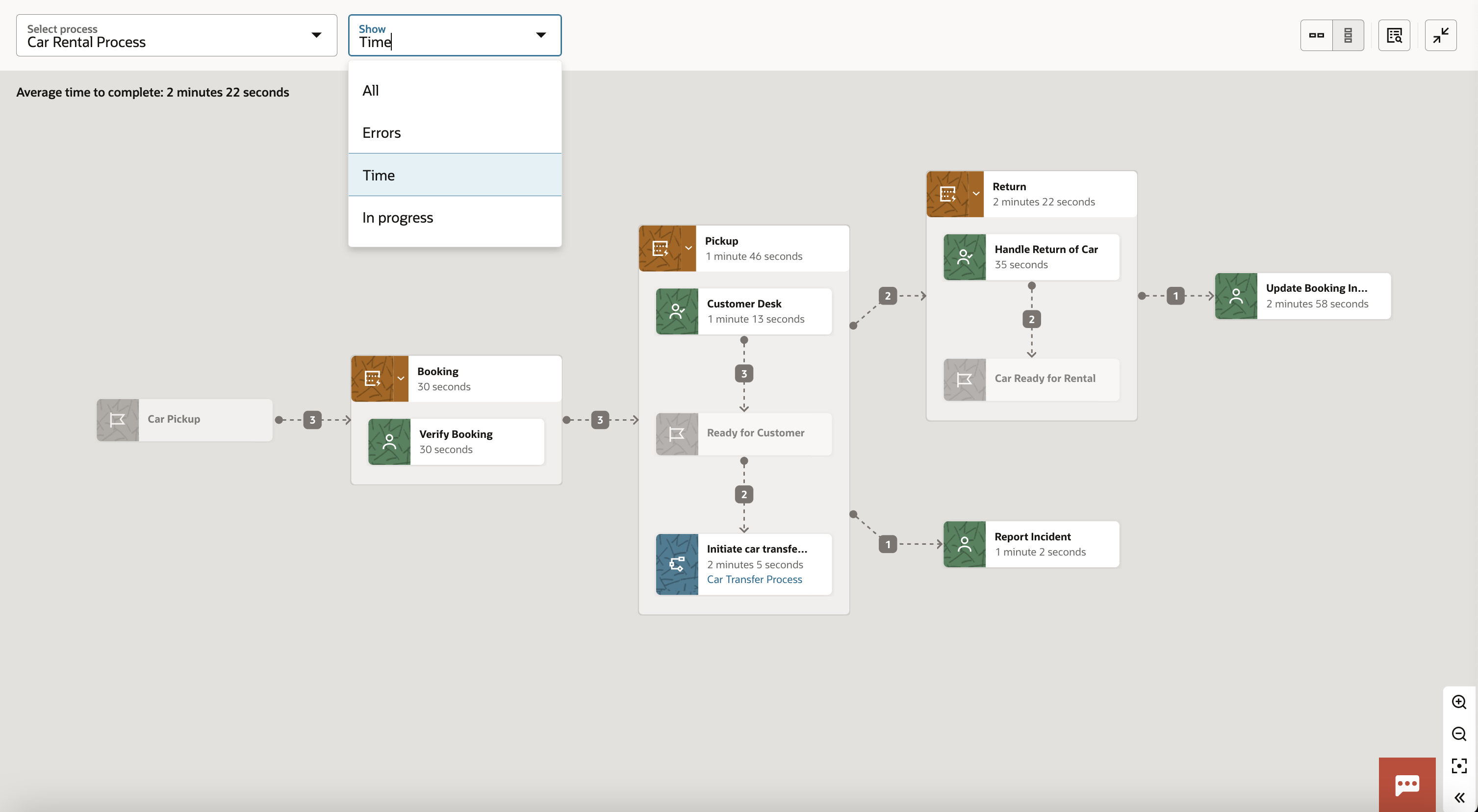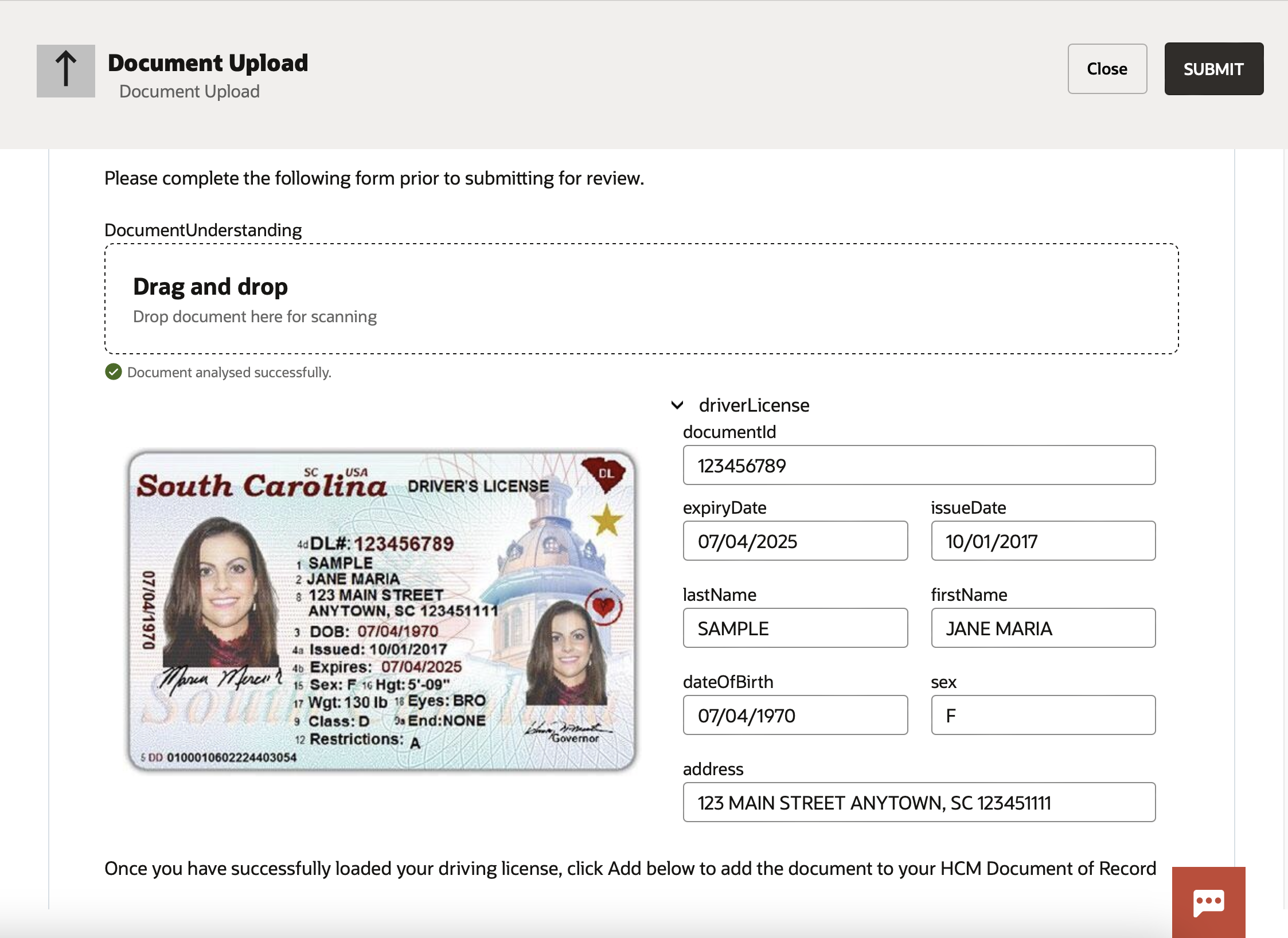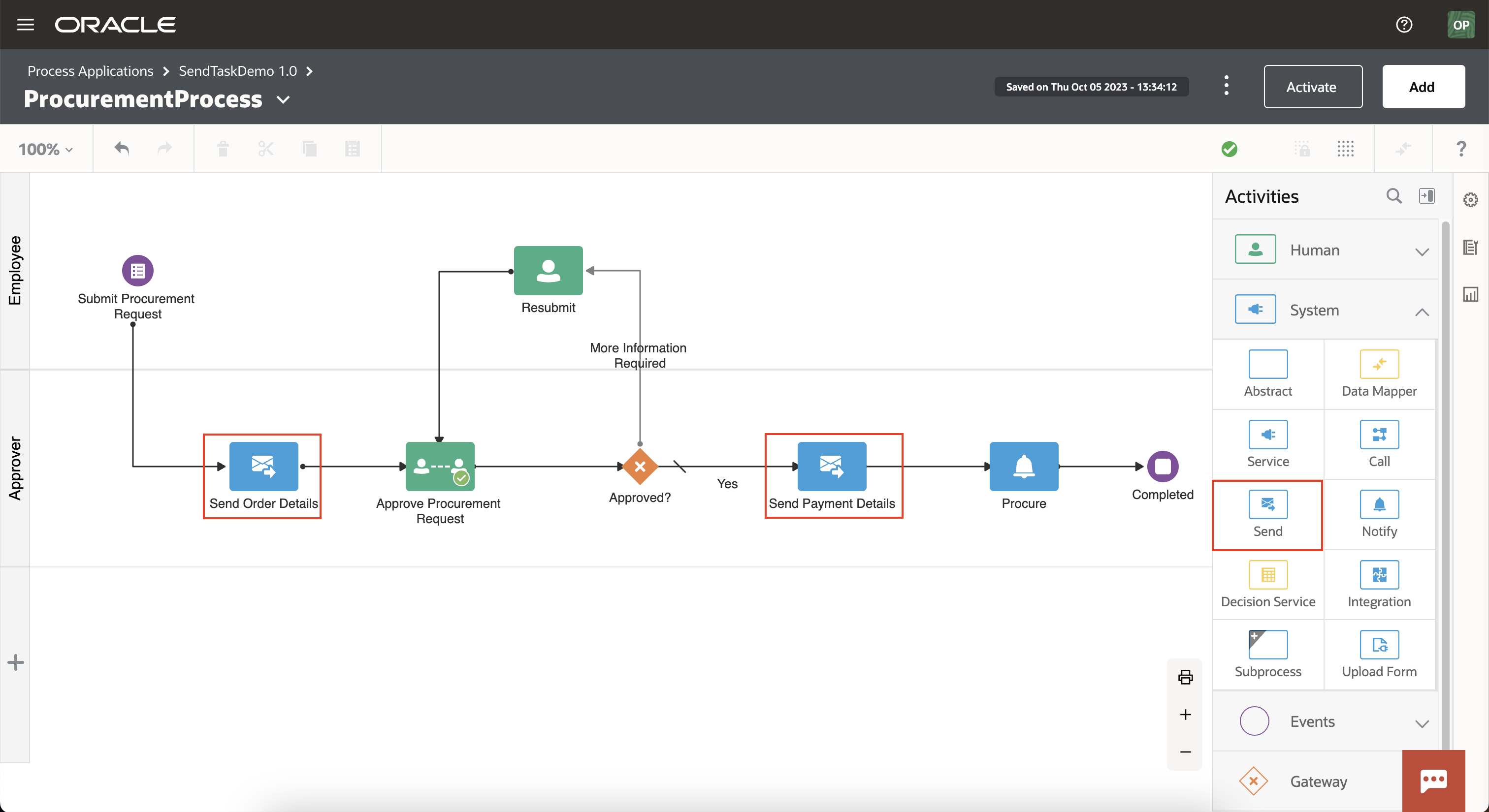
Welcome to the 23.10 release of OCI Process Automation! We have a lot of exciting features in this release that we want to share with you, such as contextualized business search, graphical view for process analytics, and intelligent document processing capabilities. In this blog, I will focus on the release headlines, so please refer to our official what’s new documentation for a comprehensive list of all new features.
As always, if you are using OCI Process Automation as part of Oracle Integration 3, you should also check out the 23.10 integration new features blog.
Business Search
A new search experience has been introduced in OCI Process Automation that allows users to search and find transactions based on business data! This enables a search experience that allows business users to find data using queries that are meaningful to them. For example, they can now search for records by a supplier, find patients by name or their Medicare ID, locate requisitions where the amount was greater than a certain value or even find a car part using its manufacturer.
The things you can search by are entirely up to you and the possibilities are endless!
To enable this feature in your process application, you will need to define which data attributes you want to expose for search. This is a once-off activity that you would do in the process designer. Once you are happy with your selection, you will need to push these changes by re-deploying or activating your application, doing so would ensure that functional users will be able to search for data across these fields in the OPA Workspace. In terms of search capabilities we support several search patterns using simple or advanced search filters that can include multiple fields, query operators, wildcards, fuzzy logic, and more.
In this release we are supporting Business Search capabilities for process Tasks, with support planned for Tracking instances in the future.
This is a topic that really needs a deeper dive, so please checkout our documentation for a step by step guide on how to get started and a walkthrough of the supported search queries and use cases.

Analytics
We are delighted to introduce a Graphical View representation of activity executions within a process. The graphical view enables you to easily monitor, understand and optimize a particular process by allowing you to:
- monitor the current state of process executions
- understand the flow or paths that process instances take
- understand the average time taken for activities to complete
- understand where errors occur and why
The insight gathered from the above data can be used to optimize your processes by removing bottlenecks or implementing modeling changes that drive efficiencies.
The graphical view supports both structured and dynamic processes and provides a contextual alternative to the existing process activity list view.

When you want to focus on answering a particular question, and you want the graphical view just to show you the relevant data, you can use our show lens to remove noise and present only the relevant data:

For more information on the graphical view, please see our updated OPA Analytics blog.
Intelligent Document Processing
We are also excited to introduce Intelligent Document Processing (IDP) capabilities in OPA via a new Document Understanding control that can be found in OPA Forms. This control exposes pre-trained Key-Value extraction models provided by OCI Document Understanding (ODU) to perform text extraction on documents such as passports, driver’s licences, receipts, and invoices. By leveraging these pre-trained models, OPA customers can instantly use document extraction capabilities without needing prior knowledge of the ODU service or training their own custom models.
The control is super easy to use and is completely native to OPA. This means that OPA is automatically configured and linked with the ODU service; therefore, there is no need to create any service connections or purchase additional services or SKUs to use this capability!
From a usability point of view all you need to do is drag the control onto a form, specify what document type you are expecting users to upload and decide whether you want to allow them to review and edit the extracted text before proceeding.
The Document Understanding control supports passport and driver’s license key-value extraction in this initial release, with other pre-trained models planned for future releases. The control is now available in all OC1 commercial regions.
For more information on how to get started with this feature, please see our dedicated blog.

SEND Activity Support in Structured Processes
The Send activity is used to communicate between processes in an OPA application. In this way, it is similar to the already existing Call Activity. However, it has one important difference: the Send activity will ensure that the parent process proceeds immediately after making the call to the child process. Therefore, it should be used in situations where you want to adopt asynchronous communication semantics between processes.
In this release, the Send activity can be used to communicate with a message or form-start event in the child process. Communication to external services via Send is not supported.

Ability to launch OPA Start forms via a direct URL
Processes that begin with a web form (aka Form-Start processes) can now be launched via a direct URL. This capability allows you to embed OPA start forms in other applications. Doing so ensures that users have a more streamlined experience as they do not need to leave the context of their application to initiate process workflows.
For instance, you can now embed OPA Start forms in Oracle Fusion Applications through HCM Journeys, Page Integration or App Composer. Doing so would allow you to insert the process form as an iFrame or launch it in a new browser window. Furthermore, if you are using Oracle Process Automation for Fusion Applications, user authentication is seamless when navigating between the two applications, ensuring a true Single Sign On experience.
To get started with this feature, please see our documentation.
We hope you are as excited about this release of OCI Process Automation as we are. To see the full list of changes introduced in this release or to get started with any particular feature, please see the What’s New section of our documentation.
